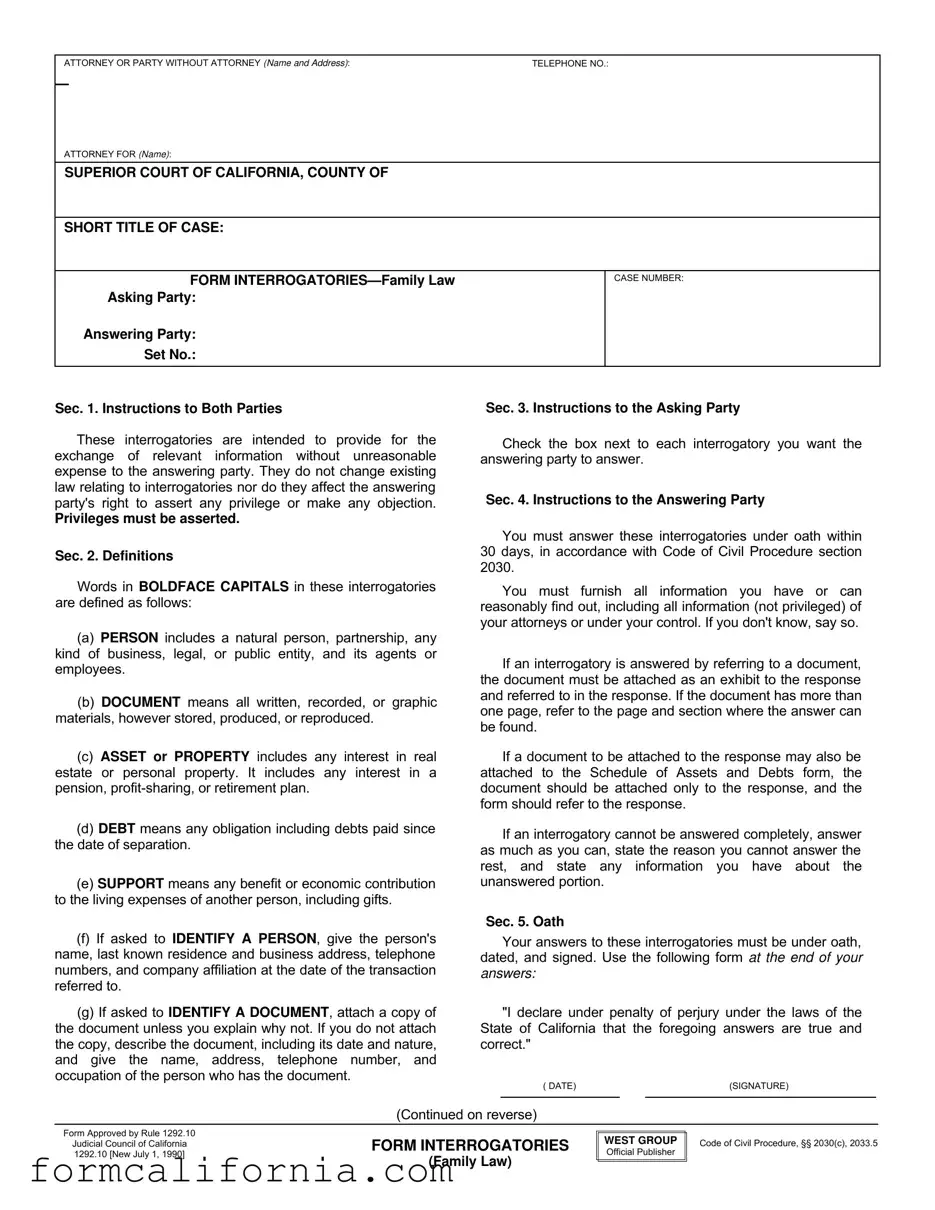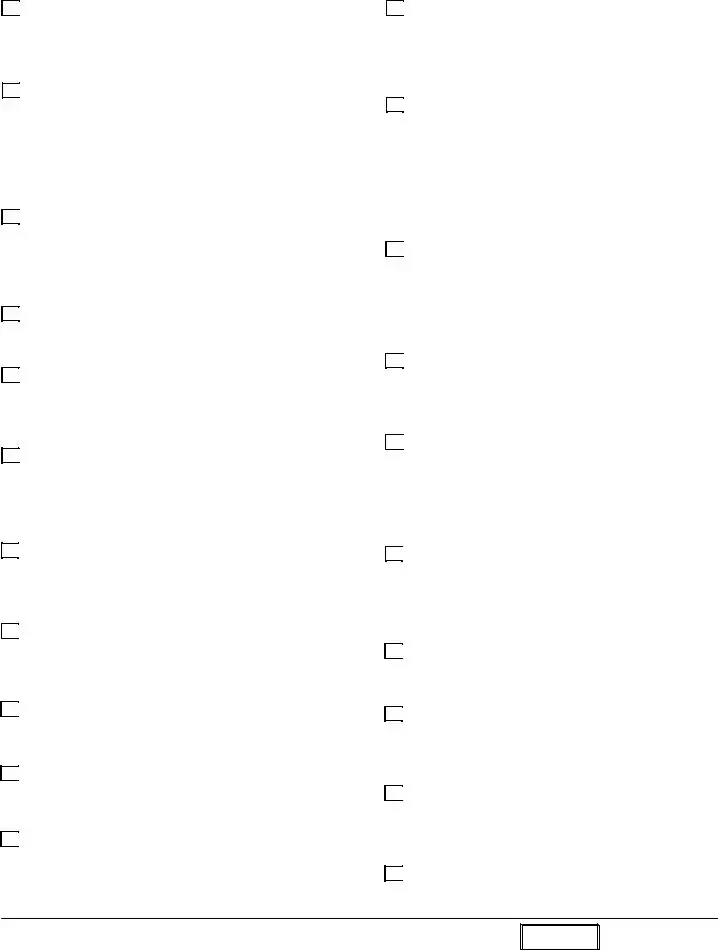The Form FL-142, Schedule of Assets and Debts, is significantly similar to the California 1292 10 form in that both require detailed disclosure of financial information in family law matters. The FL-142 specifically asks for a comprehensive listing of both assets and debts, akin to sections of the 1292 10 form that inquire about assets, debts, and even separate property contentions. They share the common goal of ensuring transparent financial disclosure between parties in a divorce or separation proceeding.
Form FL-150, Income and Expense Declaration, has parallels to the California 1292 10 form, especially regarding the sections on current income, other income, and tax returns. This form requires the party to detail their monthly income and expenses, as well as to attach tax return information, akin to the detailed financial disclosure required in the 1292 10 form. Both forms are tools used to assess financial situations for the purposes of determining spousal or child support.
The Form FL-160, Property Declaration, bears resemblance to the California 1292 10 form within the context of detailing property valuations, separate property contentions, and assets held by third parties. While the FL-160 provides an avenue to itemize community and separate property, the 1292 10 interrogatories delve into specifics about asset identification and valuation, which are crucial for property division during divorce proceedings.
Form Interrogatories - General (DISC-001) shares a methodological similarity with the California 1292 10 form, as it is designed to elicit broad-ranging information relevant to a civil case, including family law disputes. Though DISC-001 is not specifically tailored to family law, its structured queries on subjects such as identification of documents and individuals, similar to the instructions in the 1292 10 form, make it conducive to extracting detailed information necessary for legal proceedings.
The Custody and Visitation Application Attachment (Form FL-311) is indirectly related to the California 1292 10 form. Although primarily focused on child custody and visitation arrangements, Form FL-311 may encompass responses or discoveries initiated via the 1292 10 form, especially in sections related to children’s needs and health. These forms together provide a comprehensive view of the child’s welfare and the financial capabilities of each parent.
The Child Custody and Visitation Order Attachment (Form FL-341(C)) complements the information sought in the California 1292 10 form, particularly in the sections regarding children's special needs and health. Both documents serve to inform the court about the specifics of custody arrangements and any additional support a child may require, directly contributing to the court’s ability to craft informed custody orders.
The Declaration of Disclosure (Form FL-140) shares purposes with the California 1292 10 form in the preliminary and final exchange phases of divorce proceedings. This form, along with its supporting documents (which include the Schedule of Assets and Debts and the Income and Expense Declaration), is essential for revealing the financial landscapes of the parties, paralleling the 1292 10’s function in uncovering financial details and assets pertinent to divorce resolutions.
The Declaration Regarding Service of Declaration of Disclosure (Form FL-141) indirectly associates with the California 1292 10 form by serving as a follow-up verification that the exchange of financial information (as detailed in 1292 10 questions regarding assets, debts, and income) has been completed between parties. This form ensures compliance with mandatory disclosure rules, confirming the transparency required for fair proceedings in family law cases.
The Property Declaration (Family Law) form differs from the California 1292 10 form in specificity but aligns in purpose regarding the documentation and revelation of real and personal property assets within the scope of family law proceedings. It requires detailed listings similar to those in the asset, debt, and property sections of the 1292 10 form, facilitating equitable division and ensuring full financial disclosure.




 1.
1. 
 2.
2. 
 3.
3. 


 5.
5. 


 7.
7. 
 8.
8. 
 9.
9. 




 12.
12. 






 16.
16. 
 17.
17. 
 18.
18. 
 19.
19. 
 20.
20. 
 21.
21.